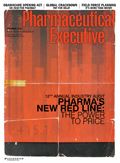Special Delivery
Pharmaceutical Executive
New drug delivery mechanisms and devices are an opportunity to build relationship with the ultimate customer: the patient.
The issues of patient safety and device usability have become hot topics in the drug-delivery market as healthcare costs continue to rise, while adherence rates have fallen to 50 percent. This strain on the healthcare system has led to stricter regulations and scrutiny for companies bringing new biologic or biosimilar products to market. Many of the challenges associated with these issues revolve around the increasing role patients are playing in the self-delivery of their treatments and their access to relevant and easy-to-understand instructions for use. This becomes increasingly important as HCPs experience tighter time constraints and a higher volume of patients, resulting in decreased interaction between patients and physicians. Reduced training times lead to poor on-boarding experiences for patients, and an inability to effectively use and maintain drug-delivery devices. As a solution to these issues, many companies have implemented device training programs to increase patient confidence with device interfaces and usage techniques. In recent years, products have integrated multisensory technologies, such as audio, video, and tactile feedback to strengthen the resonance and connectivity of their device training messages. This approach has been effective in promoting consistent learning experiences, and can help brands overcome the following challenges:

Jeff Baker
Patient challenges. In today's drug-delivery market, devices and delivery methods are becoming more complex. Device training has emerged as a preferred approach to mitigating risk and promoting safe delivery techniques.
Brand challenges. Clinical trials and new product launches are exciting times for companies bringing new products to market. These milestones however, are often delayed due to usage errors associated with complex device interfaces and user errors during human factor and viability testing. Providing patients with the right educational resources during this critical time reduces launch delays and time to market.
HCP challenges. While the demand for HCP services continues to grow, providers are being increasingly pressured to provide high quality care at the lowest cost possible. This results in an average time spent with a patient amounting to roughly 23 minutes on average. Twenty-three minutes isn't much time for patients to ask questions and learn detailed information about their delivery device.
Today, let's focus mainly on the patient challenge. The first 30 days of treatment are the most critical in establishing and reinforcing adherent usage behaviors. During this time, patients learn about their initial diagnosis and are first introduced to their drug-delivery device. Experts often view these devices as intuitive; patients, however, are frequently overwhelmed due to limited knowledge and experience with drug-delivery mechanisms. These feelings often lead to fear and anxiety, resulting in avoidance behaviors that cause patients to end or switch treatments. Providing patients with effective device training tools allows them to overcome these fears and safely manage their treatment plans.
An important trend in the drug-delivery market is the use of patient-centric care to contain cost and increase the quality of care provided to patients. But as new drug formulations in the biologic and biosimilar drug markets have entered the market with advanced delivery technologies—ostensibly designed for patient ease of use—their complex interfaces have instead led to an increase in preventable injuries and adverse events related to device misuses.
A common thread in the drug-delivery market is the need for device training solutions that connect and resonate with patients, while effectively communicating brand values and benefits to HCPs. Traditionally, products fulfilling these needs have been restricted to rep-delivered or direct mail pieces that have struggled to improve patient behaviors and/or error reduction. Building better device training tools requires a deep understanding of how patients learn, combined with an improved understanding of patients' emotional and behavioral patterns that occur after a diagnosis and throughout their treatment. Integrating effective training solutions throughout the phases of device training education ensures that patients receive consistent and relevant information associated with the stage of their treatment.
Phases of device training education
Diagnosis education. Beginning at the initial point of diagnosis, diagnosis education seeks to inform patients about what they will be experiencing during their first 30 days of treatment in order to promote a positive onboarding experience and to build patient confidence with a new delivery device.
Family and lifestyle education. The educational purpose is geared toward a patient's family, and the lifestyle changes necessary to build a strong social network in support of a patient's medication regimen. Education in this category promotes lifestyle changes to compliment the goals of treatments.
Usage education. As the centerpiece of self-administration, usage education introduces drug-delivery techniques required to effectively self-administer and overcome the initial fears of self-administration.
Adherence education. Promoting long-term adherence has never been more important. Adherence education provides patients with an understanding about the importance of remaining compliant, and the risks associated with non-adherence to treatment. Long-term communication reinforces adherent behavior and increases brand loyalty at the patient and HCP level.
At this point, many companies traditionally turn to uni-sensory and generic device training products that fail to recognize the specific therapeutic and patient needs associated with various conditions. This approach commonly results in mechanical training devices that have had little success reaching and preparing patients for the drug and non-drug influences that can affect their ability to successfully administer their treatments.
Device-related adherence influences
Drug related influences:
» Training and education
» Drug-delivery method
» Dosing
» Side effects
Non-drug related influences:
» HCP influences
» Physical/cognitive limitations
» Motivation
» Age-related factors
» Denial
» Predispositions
» Social influences
» Costs
As currently marketed products continue to mature towards patient expiration, the market landscape is being continually augmented by advancements in drug formulation and drug-delivery technology. This has led many brands to seek completive advantages outside the industry norms. Multisensory device training has emerged as a provider of such an advantage by creating added value, which can translate into brand preference at the physician and patient levels. Multisensory device training, used correctly, has been proven to increase the connectivity and retention of educational messages. This trend is likely to continue as markets continue to consolidate and become more competitive.
When developing multisensory products for patients and HCPs, environmental influences become key determining factors affecting a patient's ability to process and store information. These influences include considerations such as where the product will be used (e.g., home, doctor's office, or pharmacy) and what features it will contain. Due to the multisensory world we live in, the human brain has selectively adapted to respond best to multi-sensory sensory stimuli. One of the biggest advantages associated with multisensory learning is its stimulation and encoding within multiple lobes of the brain. This results in stronger connections across patient's audio, visual, and motor networks, leading to improved associations and transitions between educational messages and usage behaviors. When used in conjunction with the continuous phases of patient education, multisensory product features increase patient confidence and reduce risks associated with ineffective product use, and give patients confidence in their treatment.

Jeff Baker is CEO at Noble Rx Marketing. He can be reached at jbaker@noblecorporate.com.

The Misinformation Maze: Navigating Public Health in the Digital Age
March 11th 2025Jennifer Butler, chief commercial officer of Pleio, discusses misinformation's threat to public health, where patients are turning for trustworthy health information, the industry's pivot to peer-to-patient strategies to educate patients, and more.